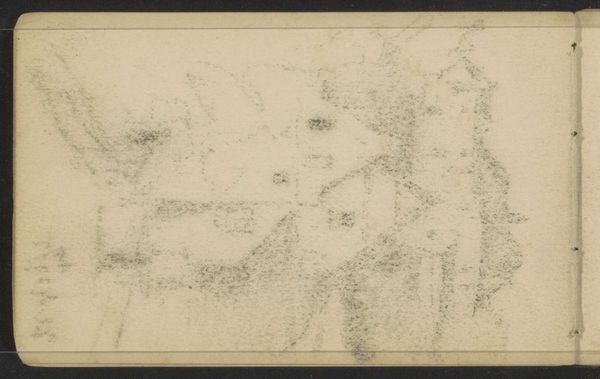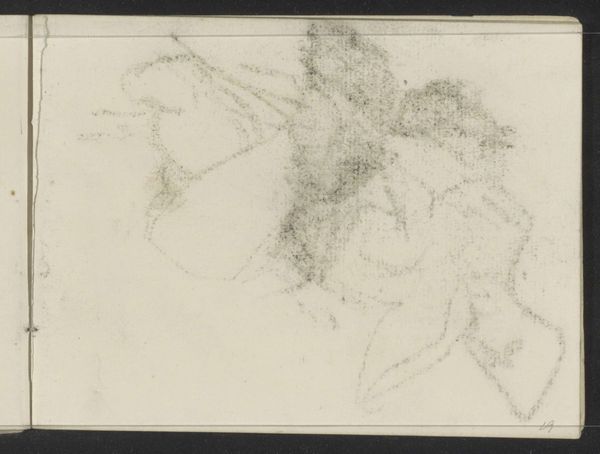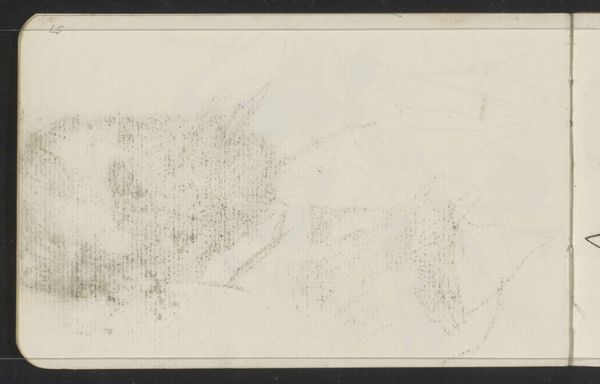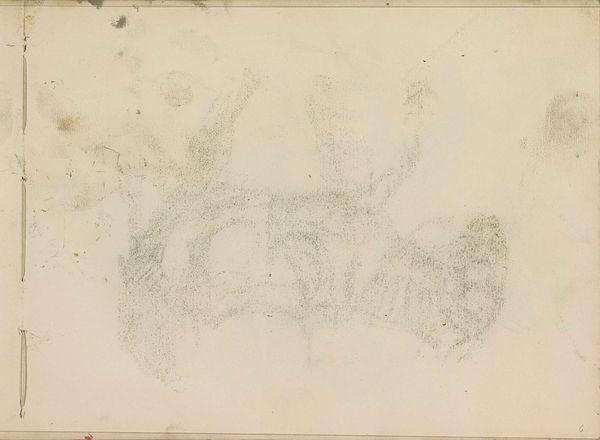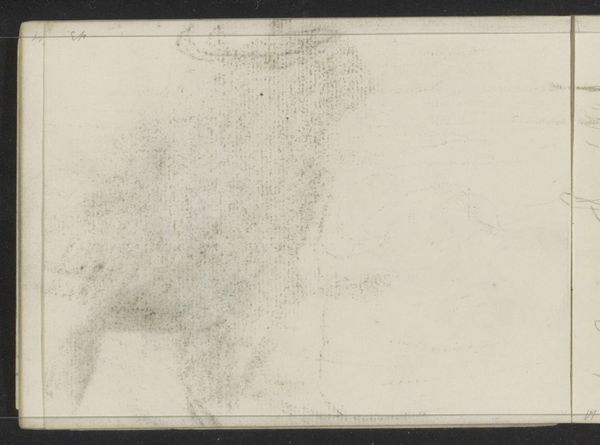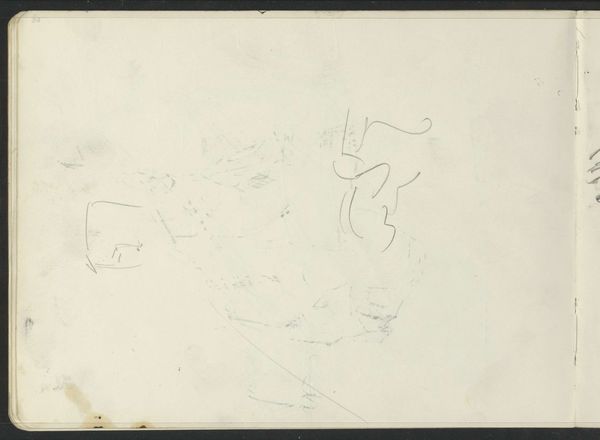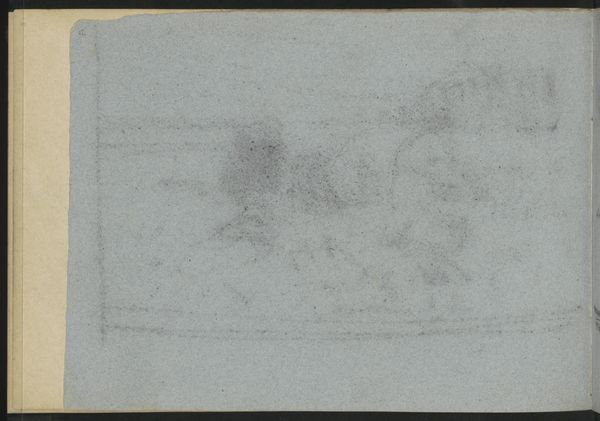
drawing, pencil
#
portrait
#
drawing
#
face
#
pencil sketch
#
pencil
Copyright: Rijks Museum: Open Domain
Curator: Welcome. Here at the Rijksmuseum we are fortunate enough to have Isaac Israels’ drawing "Hoofd en een gezicht," or "Head and a face," likely created sometime between 1886 and 1934. Editor: There’s an immediacy to this piece that's captivating. The hazy shapes are so minimal they could disappear. It reminds me how fleeting a human encounter is. Curator: It is made using humble graphite on paper. The faces seem to be impressions as if Israels attempted to distill something very essential and fundamentally human with very few strokes. I see not just faces, but perhaps types, characters rendered quickly from the street or cafe life of his time. Editor: Absolutely, it’s about efficiency. You can imagine Israels grabbing whatever paper was at hand, maybe even scrap, and quickly capturing these fleeting impressions. The material reality is stark – paper, pencil, and a decisive hand. There's an underlying value here, that you don't need grand materials to capture humanity, just skill and access to very basic tools. Curator: Look closer at the details—these sketched impressions convey so much: longing, melancholy, hope—even just from the way a line turns to suggest an eye, nose, or mouth. There’s almost something universal to be expressed in the mere human face as a cultural vessel, you know? It allows anyone from any era to project onto the simplicity here, almost a tabula rasa for understanding humankind. Editor: A universal quality evoked with simple, widely accessible means. What fascinates me about the medium of graphite itself, the residue of geological forces, turned into something artistic. The whole cycle speaks to labor and access. This drawing’s directness forces us to reckon with what materials can become with a human behind them. Curator: It leaves me to reflect upon how a single impression, swiftly captured, can become a lasting mirror, one that is infinitely able to give a glimpse back. Editor: It proves that a moment is tangible and it's often simple accessibility that dictates the means through which a moment can endure.
Comments
No comments
Be the first to comment and join the conversation on the ultimate creative platform.
